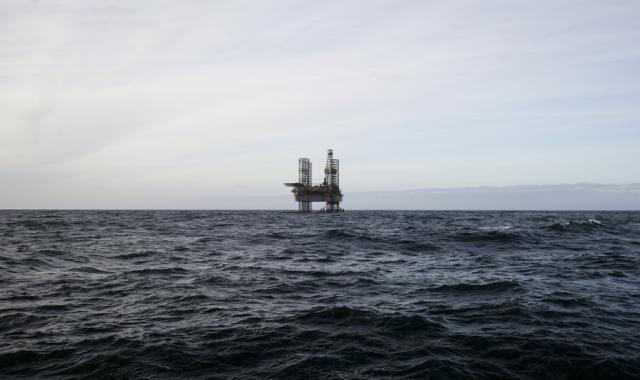
The North Sea operating environment is going through one of its most challenging periods. The costs of E&P activity are rising, and the region’s aging assets and difficult production environment have led to a decline in operational efficiency. Then there’s the oil price. What was manageable at $140/bbl isn’t possible at $40 or even $90.
The industry has to do more with considerably less. In almost any other industry, improving efficiency by following this 2-D equation would be enough. But in oil and gas cutting costs actually compounds the problem because there is a third dimension: risk.
Unfortunately, managing these three dimensions is far from straightforward. In hazardous industries risk more often than not directly equates to changes in personal and plant safety. As operational efficiency drops, so does safety. The risks increase daily, and cutting experienced people just makes it worse.
Maintenance backlog
Oil & Gas UK’s 2015 Health & Safety Report identifies a worrying tension between cost efficiency, work effectiveness and risk mitigation.
The report shows a growing number of uncompleted maintenance jobs for safety-critical equipment in the North Sea. The number of backlogged deferred maintenance man-hours per installation increased from about 1,000 to 4,000 from 2009 to 2014. Backlogged planned maintenance man-hours more than doubled, while corrective maintenance man-hours in backlog went from about 500 to 2,500.
Juggling the three dimensions for maintenance can impact maintenance strategies and work prioritization. Get the balance wrong, and strategies shift toward reaction and increasing deferrals. Planned and routine maintenance is increasingly prioritized behind other tasks and investment decisions. As a result, the backlog and overall risk increase.
Risk, productivity and efficiency
Cost escalation, increasing inefficiency and a maintenance backlog at a time when the oil price has collapsed and asset integrity is wavering is a complex environment with unforgiving consequences for jobs, safety and business survival. Making the right operational decisions is critical at all levels of the organization. If this situation is to improve, organizations need to manage all three dimensions equally and dynamically: risk in relation to productivity and efficiency.
Operational excellence can be defined as “the systematic management of process safety; personal safety; and health, environment, reliability and efficiency to achieve world-class performance.”
EY analysts have been explicit: “For executives, the need for operational excellence has never been greater.” EY suggests operational excellence could:
- Deliver a 29% increase in production;
- Deliver savings of $30 billion over five years;
- Reduce costs by 43%; and
- Reduce safety incidents by 43%.
Operational excellence today
Operators have taken many positive steps toward achieving operational excellence. However, there is growing acknowledgement of persistent gaps in operational excellence programs that prevent full realization of the benefits.
The silos that have develop around business functions have led to functional excellence, but they also have tended to make the overall operational environment more complex. Increasingly, the operational reality seen at every level of the company is inconsistent and incomplete.
Technology breakthrough
Operational excellence initially struggled because it couldn’t close the gaps between theory and operational reality, but that has changed. The availability of better, more powerful tools has coincided with the availability of more data.
By crossing silos and translating operational data, every single person across the organization, from the front line to the boardroom, can be more directly connected to operational reality. With this information everyone is able to make better, safer and more informed operational decisions.
For North Sea operators this is a critical moment. The business advantages of operational excellence can finally be achieved: lower maintenance costs, increased production, less risk, improved cost control and, ultimately, a means for long-term survival.
Recommended Reading
E&P Highlights: Dec. 16, 2024
2024-12-16 - Here’s a roundup of the latest E&P headlines, including a pair of contracts awarded offshore Brazil, development progress in the Tishomingo Field in Oklahoma and a partnership that will deploy advanced electric simul-frac fleets across the Permian Basin.
Q&A: How EthosEnergy Keeps the Oil and Gas World Spinning
2024-12-04 - EthosEnergy CEO Ana Amicarella says power demands and tools are evolving onshore and offshore and for LNG and AI.
Exxon Plans Longest 20,000-Ft Wells on Pioneer’s Midland Asset
2024-11-04 - Exxon Mobil has already drilled some of the longest wells in the New Mexico Delaware Basin. Now, the Texas-based supermajor looks to go longer on Pioneer’s Midland Basin asset.
SLB to Manage Construction of Deepwater Wells for Petrobras
2024-12-11 - SLB will work off nine ultra-deepwater rigs to oversee the construction of deepwater wells as part of the $800 million, three-year deal with Petrobras.
DNO Makes Another Norwegian North Sea Discovery
2024-12-17 - DNO ASA estimated gross recoverable resources in the range of 2 million to 13 million barrels of oil equivalent at its discovery on the Ringand prospect in the North Sea.
Comments
Add new comment
This conversation is moderated according to Hart Energy community rules. Please read the rules before joining the discussion. If you’re experiencing any technical problems, please contact our customer care team.





